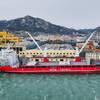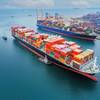Canada Ill-Placed to Ensure Safety of Arctic Shipping
Canada will have trouble ensuring marine safety in the Arctic as climate change melts the sea ice and shipping increases, Parliament's environmental watchdog said on Tuesday.
Canada, said Environment Commissioner Julie Gelfand, had "no long-term national vision" to cope with more shipping in the region, where firms are trying to exploit reserves of oil, gold, diamonds, iron ore, zinc and other commodities.
Gelfand said many high-risk areas in the Arctic had been inadequately surveyed. She also found the Coast Guard had done little to improve aids to navigation and was cutting back its ice-breaking services as demand grows.
"We found gaps and emerging risks that if left unaddressed will only grow as marine traffic increases in the region," she said in an official audit.
The Canadian Arctic is particularly challenging, since it comprises a series of large islands separated by often narrow channels that are clogged with ice for much of the year.
"We found that many higher-risk areas in the Canadian Arctic are inadequately surveyed and charted ... many charts available to mariners may not be current or reliable," Gelfand. Only 1 percent of Arctic waters have been surveyed to modern standards.
The sheer remoteness of the region, combined with an almost total lack of infrastructure, means that an accident could have calamitous consequences.
Gelfand cited experts suggesting that "due to future sea ice retreat, it is likely there will be even greater marine access and longer seasons of navigation across the Arctic".
There were around 350 marine voyages in the Canadian Arctic in 2013 and the Coast Guard estimates that number could almost double by 2020 as new mining projects start.
Canada's Conservative government says the Arctic is a priority, in particular the need for safe shipping. One way to help ensure this is by installing marine aids such as beacons, buoys and fog horns to help ships avoid danger.
But Gelfand said the Coast Guard had done little to meet increased demands for help.
"Despite repeated requests by the shipping industry for new or modified aids to navigation in 30 locations in the Arctic, reviews of only two of these locations were conducted by the Canadian Coast Guard," said the audit.
It also found the Coast Guard had cut the number of days it offered ice-breaking services at a time when the shipping season is growing. The Coast Guard says its ice breakers are reaching the end of their operational lives and need more maintenance.
The Canadian Arctic is also home to the famed Northwest Passage, which cuts the distance between Europe and the Far East to just 7,900 nautical miles (14,630 km), from 12,600 nautical miles through the Panama Canal.
Commercial shipping firms have so far largely avoided using the passage, citing the unpredictable nature of Arctic ice, the relatively shallow waters and increased insurance costs.
(Reporting by David Ljunggren; Editing by Dan Grebler)













